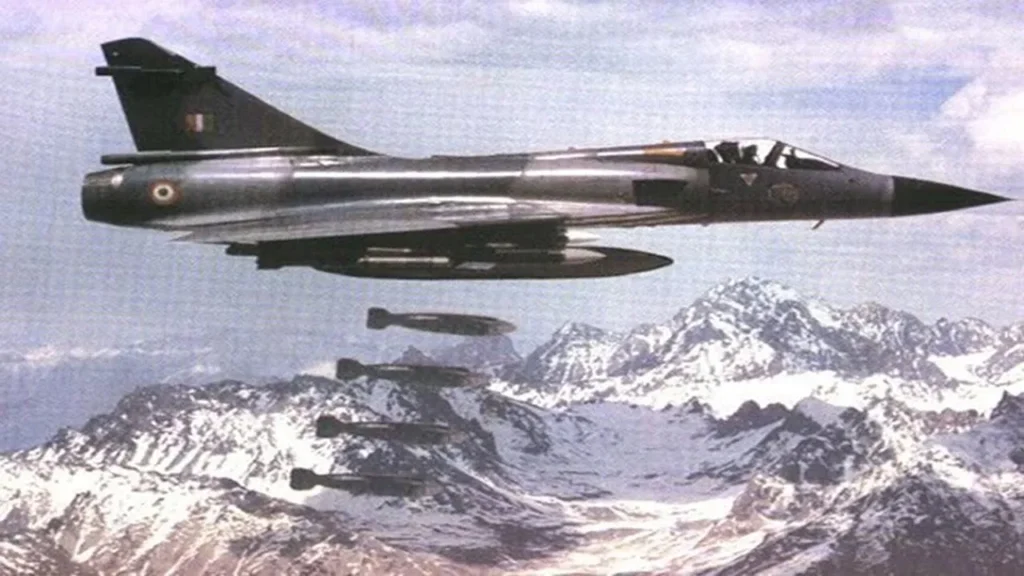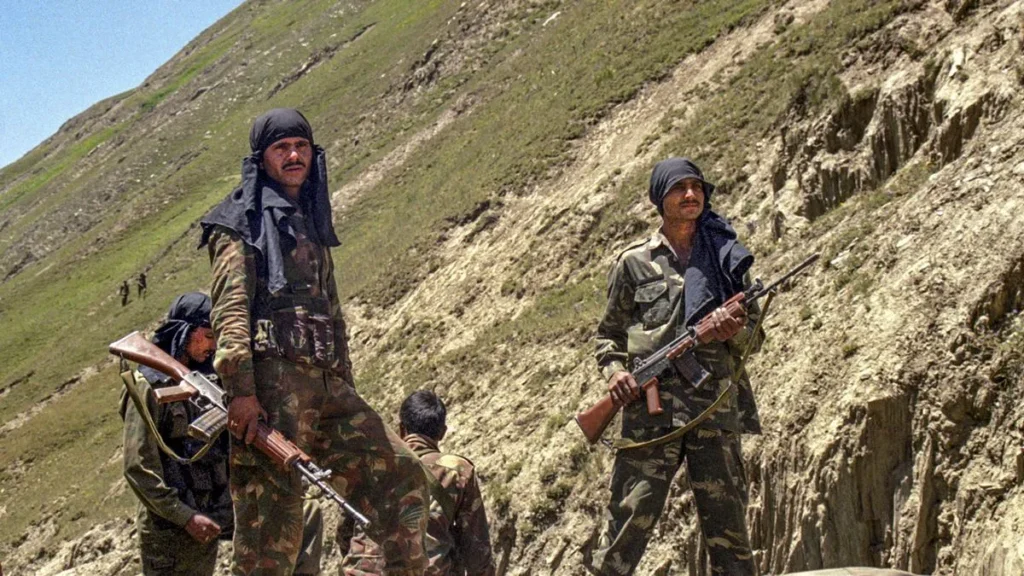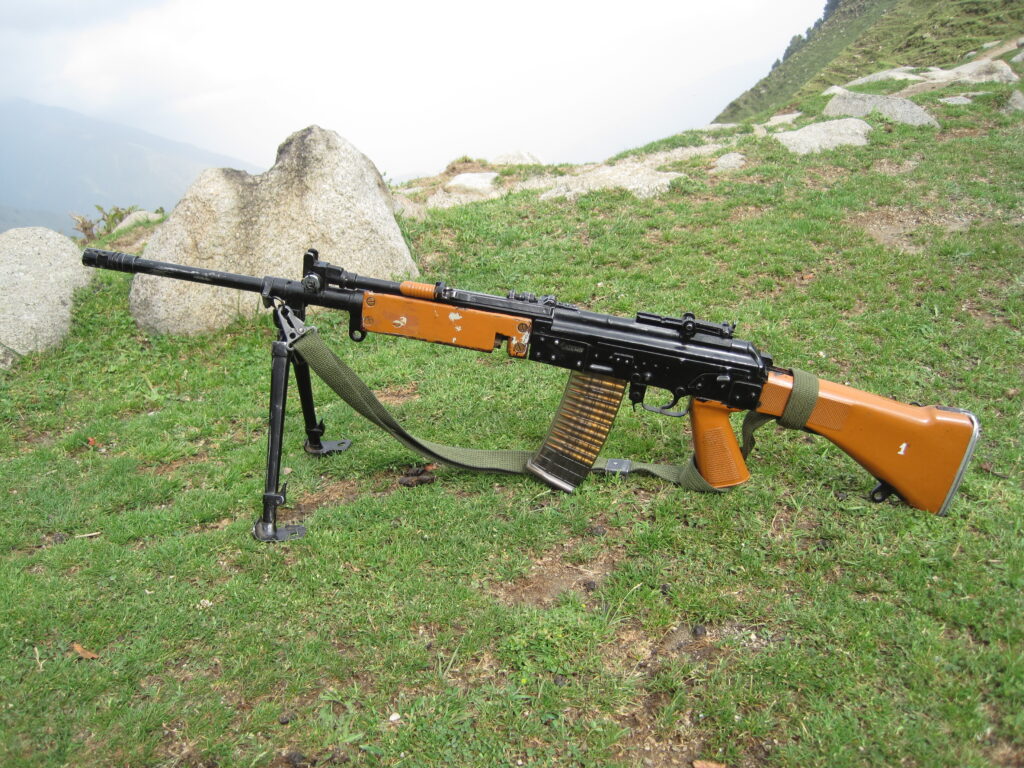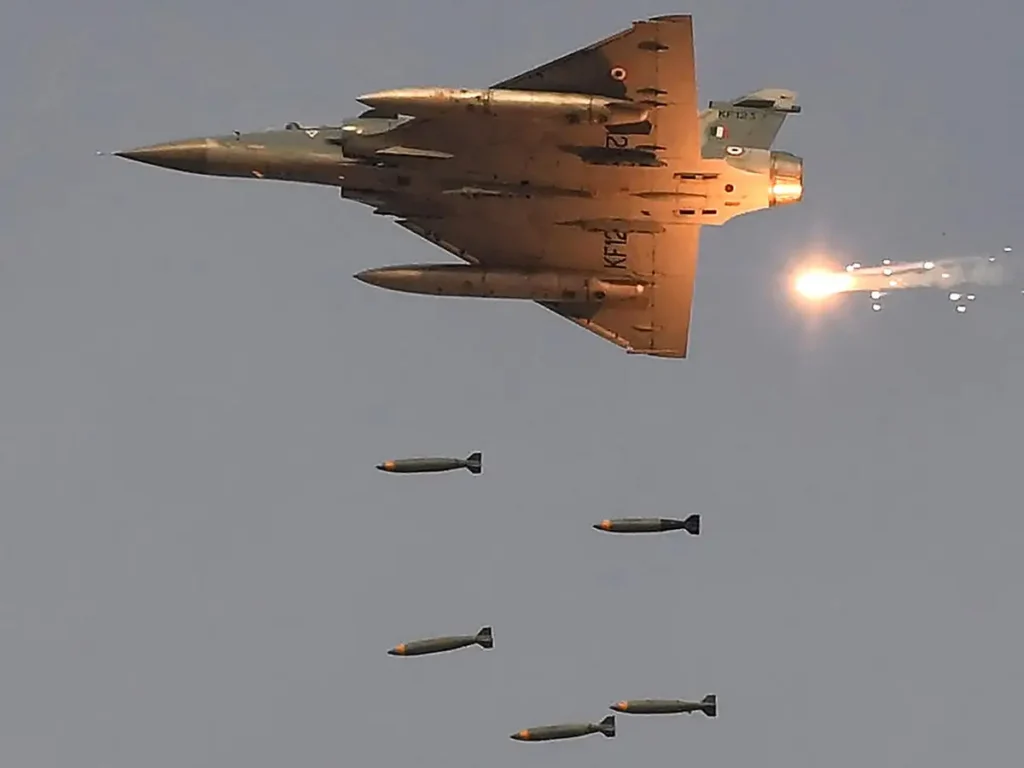The Kargil War of 1999 was a pivotal moment in India’s military history, highlighting the need for advanced defense technologies to secure the nation’s borders. This conflict, fought in the rugged terrains of Kargil, Jammu & Kashmir, underscored the importance of innovation in surveillance, weaponry, and logistics, spurring India’s push for self-reliance in defense. Today, Bengaluru’s thriving startup ecosystem is driving this vision through cutting-edge technologies like AI, drones, and 3D printing. YTC Ventures, a Bengaluru-based fintech investment platform led by a PMP-certified founder with 18+ years of IT expertise at IBM and Unisys, connects Indian businessmen, angel investors, and HNWIs (₹50 lakhs+) to these high-growth opportunities. This article explores the Kargil War’s impact on India’s defense tech, highlights investment potential in 3D printing and other innovations, and invites investors to join YTC Ventures’ platform.
The Kargil War: A Catalyst for Defense Innovation
In May–July 1999, the Kargil War saw Indian forces reclaim strategic heights from Pakistani intruders in the Kargil sector. The conflict exposed gaps in real-time surveillance, high-altitude weaponry, and supply chain resilience, costing 527 Indian lives and over ₹1,000 crores in resources. The Kargil Review Committee’s findings led to significant reforms, including the creation of the Defence Research and Development Organisation’s (DRDO) advanced programs and the push for indigenous technology under the “Make in India” initiative.

Today, India’s defense tech market is projected to grow from $21 billion in 2024 to $60 billion by 2030, driven by startups leveraging AI, unmanned systems, and 3D printing. Bengaluru, contributing 40% of India’s IT revenue, is a hub for these innovations, with initiatives like the Ministry of Defence’s iDEX (Innovations for Defence Excellence) fostering startups like Optimized Electrotech and Flying Wedge
Why India Won the Kargil War: Strategic, Tactical, and Diplomatic Triumph
The Kargil War (May–July 1999) began when Pakistani troops, disguised as Kashmiri militants, infiltrated the Indian side of the Line of Control (LoC) in Kargil, occupying high-altitude posts vacated by Indian forces during winter. India’s victory, celebrated as Kargil Vijay Diwas on July 26, was driven by several key factors:
- Superior Military Strategy and Bravery
India launched Operation Vijay, mobilizing the Indian Army and Air Force (Operation Safed Sagar) to recapture strategic peaks like Tololing, Tiger Hill, and Point 4875. Despite challenging terrain at 16,000–18,000 feet, Indian troops, led by heroes like Captain Vikram Batra and Grenadier Yogendra Singh Yadav, executed daring assaults, reclaiming 75–80% of intruded areas. The use of Bofors FH-77B howitzers provided critical firepower, neutralizing enemy positions. - International Diplomatic Support
Pakistan’s covert Operation Badr aimed to disrupt India’s supply lines to Siachen Glacier, but it backfired diplomatically. The United States, under President Bill Clinton, condemned Pakistan’s actions and pressured Prime Minister Nawaz Sharif to withdraw troops, isolating Pakistan globally. Israel provided crucial support with mortars, laser-guided missiles, and surveillance drones, enhancing India’s capabilities.

- Technological and Intelligence Improvements
The Kargil Review Committee (KRC) later highlighted intelligence lapses, such as inadequate satellite imagery and UAVs. However, during the war, India adapted quickly, using reconnaissance missions and intercepted communications (e.g., between General Pervez Musharraf and Lt. Gen. Mohammed Aziz) to confirm Pakistan’s military involvement, enabling precise counterattacks. - Resilience Against Harsh Conditions
The high-altitude terrain, with temperatures as low as -60°C in Drass, posed logistical challenges. Indian forces overcame altitude sickness, limited mobility, and enemy fire from dominant heights, demonstrating unparalleled endurance. The recapture of Tololing on June 13, 1999, marked a turning point, securing the Srinagar-Leh highway (NH1-A).
Despite 527 Indian soldiers killed and 1,363 wounded, India’s victory restored control over Kargil, reinforcing national pride and exposing Pakistan’s strategic blunder, which led to Sharif’s ousting in a 1999 coup
Kargil War 1999: Weapons That Secured India’s Victory and Their Investment Legacy
The Kargil War of 1999 was a testament to India’s military resilience, driven by strategic brilliance and advanced weaponry that reclaimed strategic heights from Pakistani intruders in the Kargil sector of Ladakh. Fought at altitudes of 10,000–18,000 feet, Operation Vijay and Operation Safed Sagar showcased the Indian Army and Air Force’s ability to adapt under extreme conditions. The war’s technological lessons have fueled India’s defense tech boom, with Bengaluru’s startups innovating in AI, drones, and 3D printing. YTC Ventures, a Bengaluru-based fintech platform led by a PMP-certified founder with 18+ years at IBM and Unisys, connects Indian businessmen, angel investors, and HNWIs (₹50 lakhs+) to these high-growth opportunities. This article details the key weapons used by India in the Kargil War, their pros and cons, estimated quantities, and how their legacy drives investment in 2025.
Key Weapons Used by India in the Kargil War
Below is an analysis of the primary weapons deployed by India, including their roles, strengths, weaknesses, and estimated quantities used, based on available sources and military analyses.
Bofors FH-77B Howitzer (155mm Artillery Gun)
Overview: A Swedish-designed 155mm howitzer, the Bofors FH-77B was the backbone of India’s artillery during the Kargil War. It was used for direct-fire roles to target Pakistani bunkers on peaks like Tiger Hill and Point 4875 (renamed Gun Hill). Its Mercedes-Benz engine allowed mobility, critical in rugged terrain.
Pros:
- High accuracy and range (up to 30 km), ideal for high-altitude bombardment.
- Rapid fire rate: 3 rounds in 12–14 seconds, devastating enemy positions.
- Mobility: Self-propelled for short distances, evading counter-fire.

Cons:
- Heavy weight (11.7 tons) limited deployment in steep areas.
- Logistical challenges: Required significant ammunition supply chains.
- Controversial procurement history (1986 deal) initially raised reliability concerns.
Quantities Used: Approximately 400 Bofors guns were in India’s arsenal by 1999, with 100–150 deployed in Kargil, firing 200–250 rounds daily per regiment (e.g., 41 Medium Artillery Regiment at Tololing). Total rounds fired estimated at 250,000.
Impact: The Bofors’ precision softened enemy bunkers, enabling infantry assaults on Tololing (June 13, 1999) and Tiger Hill (July 5, 1999)
INSAS Rifle (5.56×45mm NATO)
Overview: The Indian Small Arms System (INSAS) rifle, developed by DRDO, was the standard infantry weapon during the Kargil War, used for close-quarter combat in rugged terrain.
Pros:
- Lightweight (4.15 kg), suitable for high-altitude mobility.
- Versatile: Supported single-shot, burst, and automatic modes.
- Locally produced, ensuring ample supply.

Cons:
- Reliability issues: Polymer magazines cracked in -20°C temperatures.
- Stoppages and unintended full-auto firing in burst mode.
- Limited stopping power compared to 7.62mm rifles like the SLR.
Quantities Used: Approximately 100,000 INSAS rifles were in service by 1999, with 20,000–30,000 likely used by infantry units in Kargil (e.g., 18 Grenadiers, 2 Rajputana Rifles).
Impact: Despite reliability issues, the INSAS enabled effective close-quarter engagements, though units often preferred captured AK-47s for reliability.
Pinaka Multi-Barrel Rocket Launcher (MBRL)
- Overview: Developed by DRDO, the Pinaka MBRL, mounted on trucks, fired 12 rockets in 44 seconds, targeting enemy infantry and positions.
- Pros:
- High firepower: Covered large areas, disrupting supply lines.
- Rapid salvo delivery: 12 rockets in under a minute.
- Indigenous design, cost-effective for mass deployment.

- Cons:
- Limited precision compared to laser-guided systems.
- Early-stage development in 1999 meant limited units available.
- Required flat terrain for optimal deployment, challenging in Kargil.
- Quantities Used: 2–4 Pinaka units (each with 12 rockets) were deployed, firing an estimated 1,000–2,000 rockets during the conflict.
- Impact: Pinaka’s barrages supported infantry assaults, notably in Drass and Mashkoh Valley (July 7, 1999).
Mirage 2000 Fighter Jet
Overview: The Indian Air Force’s Mirage 2000, equipped with Paveway II laser-guided bombs (LGBs), conducted precision strikes under Operation Safed Sagar. Israel supplied LGBs and surveillance drones.
Pros:
- Precision strikes: LGBs accurately targeted bunkers at 16,000+ feet.
- Advanced avionics: Enhanced night and high-altitude capabilities.
- Versatility: Supported reconnaissance and air superiority.

Cons:
- High operational cost: Expensive to maintain and deploy.
- Limited by IAF’s restricted mandate to avoid LoC violation.
- Vulnerable to surface-to-air missiles (SAMs) at lower altitudes.
Quantities Used: Approximately 40 Mirage 2000s were in IAF service, with 10–15 deployed in Kargil, conducting 500+ sorties and dropping 1,000–1,500 bombs, including 500 LGBs.
Impact: Mirage 2000 strikes on Tiger Hill and Muntho Dhalo (June 24, 1999) crippled enemy logistics, aiding ground victories.
MiG-21, MiG-23, and MiG-27 Aircraft
- Overview: These Soviet-designed jets supported ground attacks and reconnaissance. MiG-25 Foxbats were used for high-altitude surveillance.
- Pros:
- Cost-effective: Cheaper to operate than Mirage 2000s.
- MiG-27’s ground-attack capability suited rugged terrain.
- MiG-25’s high-altitude (80,000 feet) reconnaissance evaded SAMs.
- Cons:
- Limited precision: Relied on unguided bombs, less accurate than LGBs.
- MiG-21s were outdated, with one shot down by Pakistani SAMs.
- High-altitude performance issues due to thin air.
- Quantities Used: IAF had 200+ MiG-21s, 40+ MiG-27s, and 20+ MiG-23s, with 30–50 deployed in Kargil, conducting 1,000+ sorties. MiG-25s (4–6) flew 50–100 reconnaissance missions.
- Impact: MiG-27 strikes disrupted enemy camps, while MiG-25s provided critical imagery for targeting.
T-72 Tanks and BMP-2 Infantry Fighting Vehicles
Overview: T-72 tanks and BMP-2s provided limited but crucial fire support in flatter areas like Drass.
Pros:
- T-72’s 125mm gun delivered heavy firepower.
- BMP-2’s mobility and 30mm cannon supported infantry.
- Armored protection enhanced troop safety.
Cons:
- Terrain-limited: Ineffective on steep slopes above 8,000 feet.
- Logistical challenges: Fuel and maintenance in remote areas.
- Minimal role due to high-altitude constraints.
Quantities Used: 20–30 T-72s and 30–50 BMP-2s were deployed, primarily in Drass and Batalik, supporting 5–10% of operations.
Impact: Provided mobility and firepower for ground assaults in accessible areas.
Mi-17 Helicopters
Overview: Mi-17s were used for troop transport, reconnaissance, and close air support, operating in harsh conditions.
Pros:
- Versatile: Carried troops, supplies, and conducted evacuations.
- High-altitude capability: Operated up to 16,000 feet.
- Armed with rockets for close support.
Cons:
- Vulnerable to SAMs: One Mi-17 was shot down early in the conflict.
- Limited payload in thin air reduced effectiveness.
- High maintenance in extreme cold.
Quantities Used: 20–30 Mi-17s were deployed, conducting 500–700 sorties for logistics and support.
Impact: Enabled rapid troop deployment and casualty evacuation, critical in Tololing and Tiger Hill battles.
Mortars (81mm and 120mm)
Overview: Mortars provided close-range fire support for infantry assaults on fortified positions.
Pros:
- Portable: Easily deployed by infantry in rugged terrain.
- Effective against bunkers and trenches.
- Cost-effective compared to heavy artillery.
Cons:
- Limited range (5–7 km) compared to howitzers.
- Exposed crews to enemy sniper fire.
- Weather-dependent accuracy in high winds.
Quantities Used: 500–1,000 mortars (81mm and 120mm) were used across 15–20 infantry battalions, firing 50,000+ rounds.
Impact: Supported close-quarter assaults, notably in Batalik and Drass.
Kargil’s Technological Legacy: Driving Defense Tech Investments
The Kargil War exposed gaps in surveillance, high-altitude equipment, and precision weaponry, leading to reforms like the establishment of iDEX and DRDO’s focus on indigenous tech. Bengaluru’s startups are now addressing these gaps:
- AI and Surveillance: Optimized Electrotech’s AI-powered ISR systems raised $6 million in 2025.
- Drones: Flying Wedge’s UAVs secured ₹10 crores for counter-terrorism solutions.
- 3D Printing: Intech DMLS produces lightweight drone parts, cutting costs by 50%.
India’s defense tech market, projected to reach $60 billion by 2030, offers 15–35% ROIs. Government initiatives like iDEX and a $130 billion defense budget make Bengaluru a hub for innovation.
Case Study: A Mumbai-based angel investor used YTC Ventures to invest ₹30 lakhs in a Bengaluru 3D printing startup, achieving a 25% ROI in 12 months after a DRDO contract.
Why Bengaluru Is India’s Defense Tech Powerhouse
Bengaluru’s 7,000+ startups and tech talent pool make it a leader in defense innovation. Government initiatives like iDEX and the Technology Development Fund (TDF) provide grants and contracts, catalyzing partnerships between startups and the Indian Army, Navy, and Air Force. The liberalization of FDI (up to 74% in defense) and a $130 billion defense budget in 2024 have attracted global investors.
Key trends driving Bengaluru’s defense tech boom:
- AI and Surveillance: Startups like Optimized Electrotech develop AI-powered imaging for intelligence, surveillance, and reconnaissance (ISR), raising $6 million in 2025.
- Drones and Autonomous Systems: Flying Wedge’s DGCA-certified UAVs for surveillance and counter-terrorism secured ₹10 crores in 2024.
- 3D Printing: Additive manufacturing startups are producing lightweight, cost-effective components for drones and munitions, reducing production times by 50%.
Case Study: A Mumbai-based angel investor used YTC Ventures to invest ₹30 lakhs in a Bengaluru 3D printing startup developing drone parts, achieving a 25% ROI in 12 months.
3D Printing: Revolutionizing Defense Manufacturing
3D printing, or additive manufacturing, is transforming defense by enabling rapid prototyping and cost-efficient production of complex parts. India’s 3D printing market is expected to grow from $1.2 billion in 2024 to $5 billion by 2030, with defense as a key driver. Bengaluru startups are leveraging 3D printing for:
- Lightweight Components: Producing drone frames and missile parts with up to 30% weight reduction.
- On-Demand Manufacturing: Enabling field repairs for military equipment, critical in remote areas like Kargil.
- Customization: Creating tailored gear for soldiers, enhancing operational efficiency.
Sample Startups:
- Intech DMLS: Bengaluru-based, specializes in metal 3D printing for aerospace and defense, with contracts from DRDO.
- Think3D: Offers 3D-printed prototypes for UAVs, raising ₹15 crores in 2024 from Indian Angel Network.
- Wipro 3D: Provides additive manufacturing solutions for defense, partnering with global firms like 3D Systems.
Investment Potential: 3D printing startups offer 15–30% ROIs, driven by demand from India’s $2 billion UAV market.
Why Indian Businessmen and Angel Investors Should Invest
India’s defense tech sector is a goldmine for angel investors and businessmen, with 53.9% of 2022 startup funding coming from angels (5,120 investors). Bengaluru’s startups, backed by investors like T.V. Mohandas Pai and Mumbai Angels, are scaling rapidly. Key reasons to invest:
- High Returns: Defense tech startups yield 15–35% ROIs due to government contracts and export potential.
- ESG Impact: Investments align with India’s self-reliance goals, appealing to socially conscious investors.
- Government Support: iDEX and TDF provide grants, reducing startup risks.
How YTC Ventures Empowers Investors
YTC Ventures’ AI-driven platform connects Indian businessmen, angel investors, and HNWIs to vetted defense tech and 3D printing startups:
- Curated Deals: Access Bengaluru-based startups with ₹10 lakh+ investments and 15–35% ROIs.
- Blockchain Security: Transparent, secure transactions build trust.
- PMP-Driven Approach: Our founder’s IBM expertise ensures rigorous due diligence, mirroring project management principles like risk and scope management.
- Technocrat Magazine Insights: Read articles like “Defense Tech: India’s Next Investment Frontier” at https://ytcventures.com/technocrat-magazine/
Case Study: A Delhi-based HNWI invested ₹50 lakhs in a Bengaluru drone startup via YTC Ventures, achieving a 20% return in 18 months after securing an Indian Army contract.
Strategies for Indian Businessmen and Angel Investors
- Focus on Dual-Use Tech: Invest in startups like Constelli, whose AI solutions serve both defense and civilian markets.
- Leverage iDEX: Target startups with iDEX grants for lower risk and faster scaling.
- Diversify: Spread investments across AI, drones, and 3D printing to mitigate risks.
For MBA Students: The Kargil War’s lessons in innovation offer case studies for IIM/ISB, with YTC Ventures’ internships providing hands-on fintech experience.
Join YTC Ventures to Invest in India’s Defense Future
The Kargil War’s legacy fuels India’s defense tech revolution, with Bengaluru leading in AI, drones, and 3D printing. YTC Ventures connects you to these opportunities, offering a seamless platform for Indian businessmen and angel investors.
Ready to invest in defense tech? Contact us at https://ytcventures.com/technocrat-magazine/ to explore deals starting at ₹10 lakhs. Download our free eBook, “Investing ₹50 Lakhs in India’s Defense Tech Boom,” to uncover high-return strategies. Join our webinar, “Kargil’s Legacy: Investing in Defense Tech in 2025,” to connect with founders and VCs.
Call to Action: Visit https://ytcventures.com/listings/ to discover defense tech and 3D printing investments with 15–35% ROI potential. Follow us on X and LinkedIn for updates on Bengaluru’s startup ecosystem!

Comments